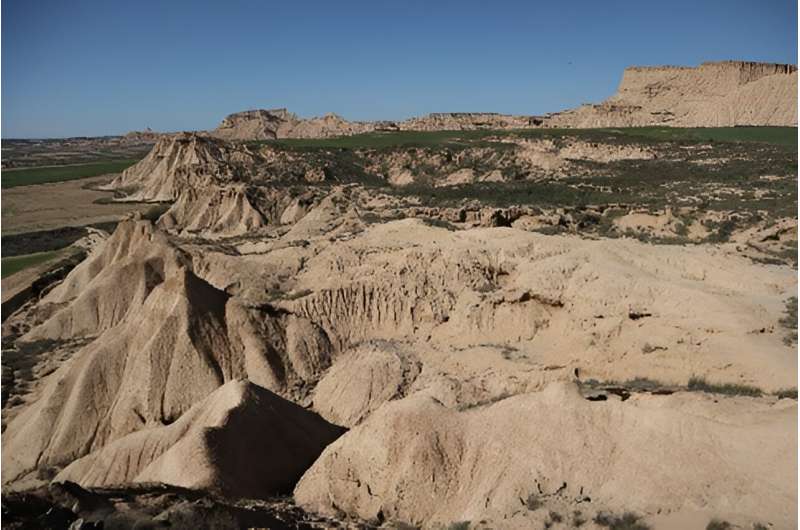This article has been reviewed according to Science X's editorial process and policies. Editors have highlighted the following attributes while ensuring the content's credibility:
fact-checked
peer-reviewed publication
trusted source
proofread
New study highlights expansion of drylands amidst impact of climate change

Nearly half of the world's land surface is now classified as drylands and these areas are accelerating their own proliferation, according to new research.
The findings, published August 29 in the journal Science, show around 45% of global land surface comprises deserts, shrublands, grasslands, and savanna woodlands. A chief characteristic of these regions is water scarcity, which significantly affects natural ecosystems and human-managed landscapes, including agriculture, forestry and livestock production.
While it has long been known that climate change and land management practices contribute to dryland expansion, the results revealed a surprising factor: drylands themselves are accelerating their own spread.
Climate scientists at the University of Bristol collaborated on the study, led by Ghent University, in Belgium, with experts at Cardiff University and ETH Zurich.
Co-author Katerina Michaelides, Professor of Dryland Hydrology, said, "Drylands occupy more than 40% of the global land surface and are characterized by water scarcity resulting from low precipitation and high atmospheric water demand.
"However, climate change is exacerbating atmospheric drying in these regions, leading to further terrestrial water loss through evaporation and driving the global expansion of drylands, transforming humid regions into more arid environments."
In this new study, researchers quantified the process of dryland self-expansion by analyzing the sources of precipitation and heat over newly expanded drylands. By tracking air movements over these regions over the past 40 years, the team was able to calculate, for the first time, how much of the rainfall deficits and increased atmospheric water demand contributing to dryland expansion could be attributed to existing drylands.
"Out of the approximately 5.2 million square kilometers of humid land that transitioned into dryland over the past four decades, more than 40% of the change was due to dryland self-expansion," said lead author Dr. Akash Koppa, Post-doctoral Research Fellow at the Hydro-Climate Extremes Lab (H-CEL), Ghent University.
The study found that drying soils in existing drylands release less moisture and more heat into the atmosphere, leading to reduced rainfall and increased atmospheric water demand in downwind humid regions. Over time, this process can cause these humid areas to gradually become drylands themselves.
In regions such as Australia and Eurasia, self-expansion has been identified as the primary driver of dryland spread.
Dr. Koppa added, "As we continue to move towards a warmer and potentially drier future, the phenomenon of dryland self-propagation could accelerate, posing significant risks to human livelihoods, ecosystems, and socio-economic stability globally."
The study also highlights the regions' most vulnerable to further dryland expansion and underscores the urgent need for climate change mitigation and sustainable land management practices. By quantifying the impact of distant vegetation responses on dryland expansion, the research emphasizes the importance of coordinated ecosystem conservation efforts in existing drylands.
The team is currently focused on developing land-based adaptation strategies to prevent drought and heat propagation.
More information: Akash Koppa et al, Dryland self-expansion enabled by land–atmosphere feedbacks, Science (2024). DOI: 10.1126/science.adn6833
Journal information: Science
Provided by University of Bristol





















